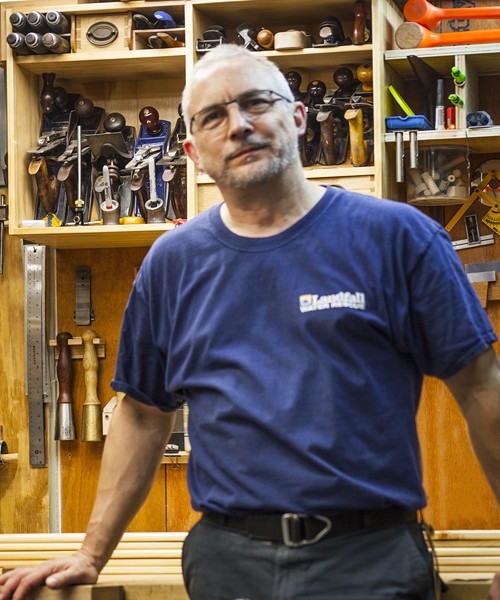TL;DR: Many perfect cuts go sideways because of a flawed “transfer” step in the dovetail layout. Myko identified this, invented a new method he calls calibrated collinear marking, and founded TailSpin Tools to solve it.
Introduction
In fine‑handwork joinery, we often assume the layout is solved and the difficult part is the cutting. But as many woodworkers know, the weak link often isn’t the saw or chisel — it’s the marking. In the article “Interesting Dovetail Layout Tools” from Fine Woodworking, writer Ben Strano points out that:
“Outside of sawing technique, most dovetailing issues can be traced back to a bad transfer from the tail board to the pin board.” FineWoodworking+1
That recognition lies at the heart of why Myko launched TailSpin Tools.
The “transfer problem”
When you cut one board of a dovetail joint (pins or tails) and then transfer those layout marks to the mating board, you introduce multiple opportunities for error: alignment, stability, measuring, sighting. The Fine Woodworking article continues:
“Whether you start pins first or tails first, the transfer between the two is the make or break spot for your dovetails.” FineWoodworking+1
In other words: the moment you move from one board to the other is exactly where goofs tend to occur.
Myko’s eureka moment
Myko, a woodworker and inventor with decades of experience, asked: what if you could lay out both boards at once? What if you could eliminate the transfer entirely? His development work (prototypes, tests) led to a toolset that uses physical registration and a calibrated offset so that marks on both boards are perfectly aligned—before any sawing begins. tailspintools.com+1
The result: you mark pins and tails simultaneously, with matching layout lines on both surfaces.
Founding TailSpin Tools
With his breakthrough in hand‑cut dovetail workflow, Myko formalised the company TailSpin Tools and patented the technology. The website states:
“US Patent # 11,878,407 calibrated collinear marking is a faster, more accurate way to layout your dovetails.” tailspintools.com+1
And promotes the system as the “first real innovation in hand‑cut dovetail workflow since King Tut.” tailspintools.com
That’s a bold claim — but given how longstanding the dovetail transfer problem is, it makes sense.
Why this matters
When the layout is perfect on both boards, cutting becomes less about compensating for mis‑marks and more about executing clean work. As Myko explains in his blog post: using TailSpin marking gauges, he marked both pin and tail boards in about 2 minutes 54 seconds; using traditional tools, the equivalent took 9 minutes 5 seconds (a difference of more than 6 minutes). tailspintools.com
The takeaway: less marking time, fewer errors, more confidence in fit.
If you’re ready to rethink your dovetail‑layout workflow, explore the calibrated collinear marking method from TailSpin Tools. In the next post, we’ll dive into how exactly the tools work and what sets them apart from other marking gauges.
- Inside the Innovation: How Calibrated Collinear Marking Works - November 5, 2025
- When the Transfer Broke the Fit: Why Myko Set Out to Reinvent Dovetail Layout - November 3, 2025
- POV TailSpin Tools Video Request - January 7, 2025

